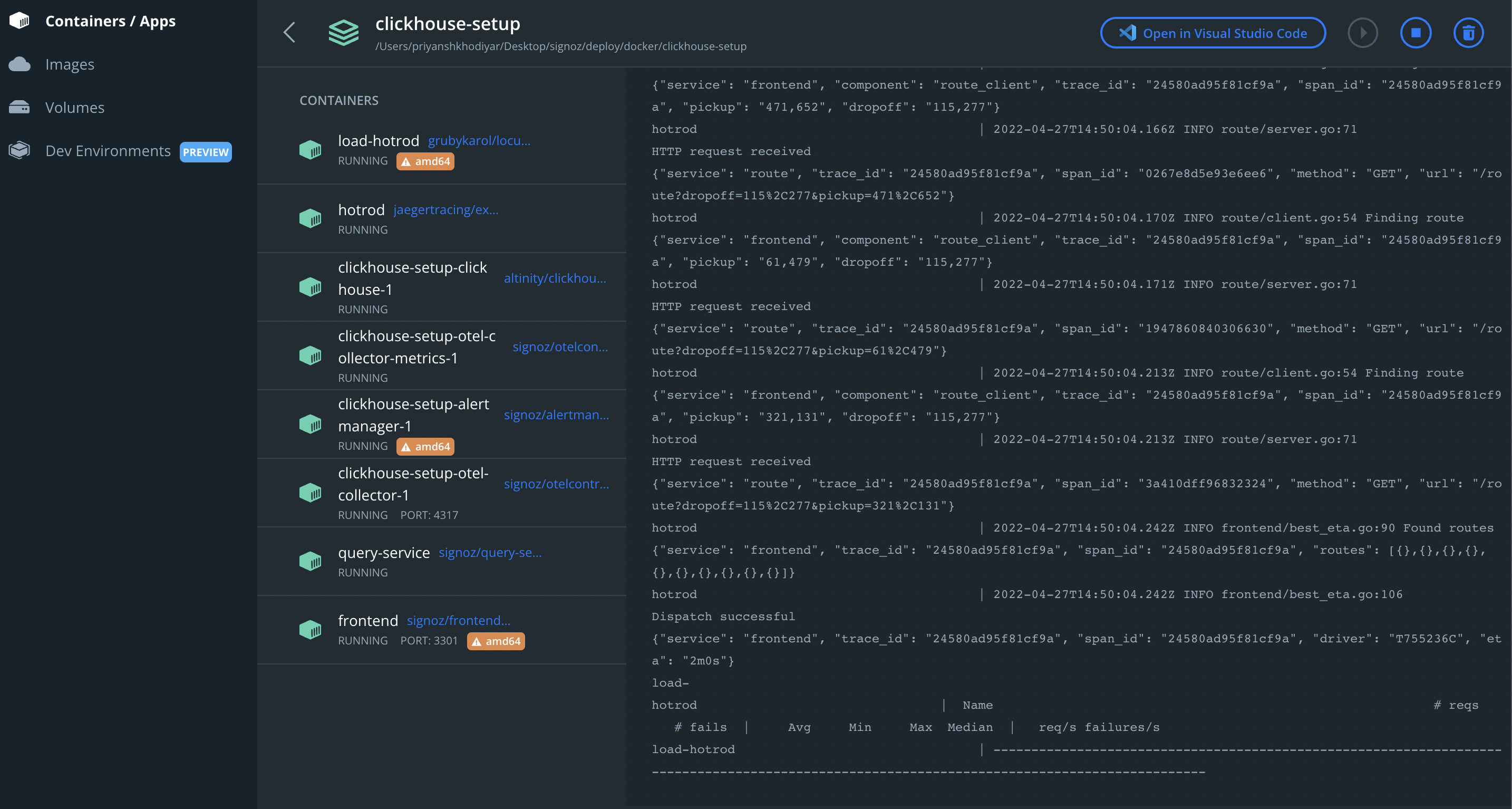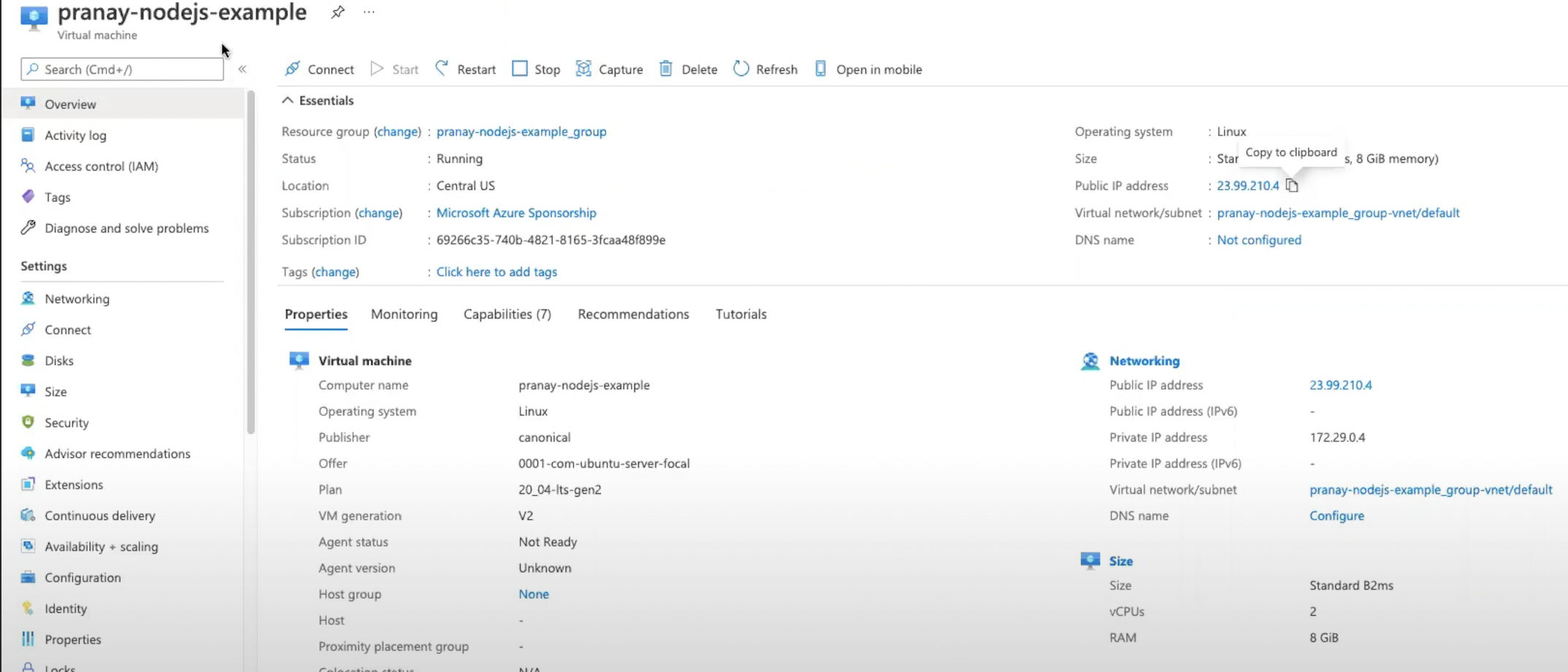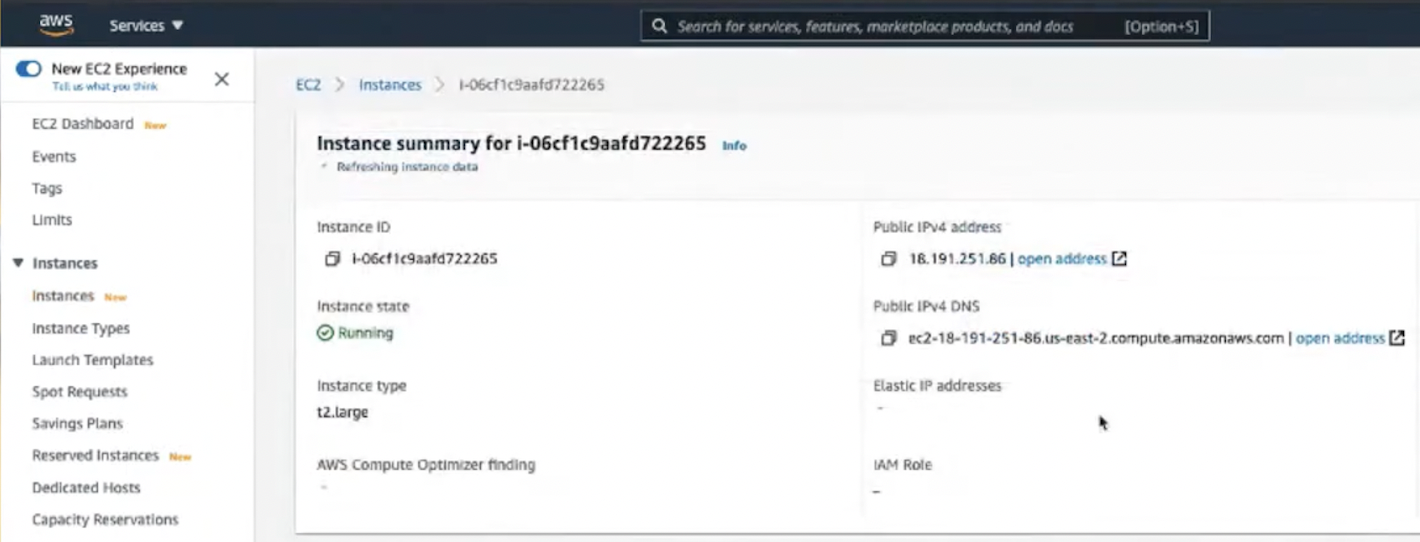SigNoz Standalone Installation on macOS
NOTE: I HAVE APPENDED THE ORIGINAL DOCS, NOT ALL OF THE CONTENT OF THIS VERY PAGE IS MY ORIGINAL WORK, I HAVE MODIFIED AT MANY PLACES.
At the moment, SigNoz supports instalaltion on macOS or Linux system only. (Refer to issue #645 to know status of SigNoz installation using WSL). There are two ways in which you can install SigNoz:
- You may execute a script that checks your environment, installs Docker Engine and Docker Compose on Linux, and runs the
docker compose upcommand for you. - You may execute the
docker compose upcommand yourself.
Both methods are provided below.
info
SigNoz recommends you to use the install script on macOS and the following Linux distributions:
- Ubuntu (preferably 20.04 LTS)
- Debian (v11.0)
- OpenSuse (v15.3)
- CentOS (v8.5.2)
- SUSE Linux Enterprise Server (SLES v4.12)
If you're using a different Linux distribution, see the Install SigNoz Using Docker Compose section.
Prerequisites
- A Linux or macOS machine. Microsoft Windows is currently not supported.
- On macOS, you must manually install Docker Engine or Docker Desktop (Docker Engine ships with it) before you run the install script.
- The install script automatically installs Docker Engine on Linux.
- A minimum of 2GB of memory must be allocated to Docker irrespective of the Operating System.
- Git client
- Ensure that the port
3301is open on the machine where you will install SigNoz.
info
To setup development environment, refer
Install SigNoz Using the Install Script
In a direcrory of your choosing, clone the SigNoz repository and
cdinto thesignoz/deploydirectory by entering the following commands:git clone -b main https://github.com/SigNoz/signoz.git && cd signoz/deploy/Run the
install.shscript:./install.sh
Install SigNoz Using Docker Compose
info
Before you install Signoz, ensure that Docker Compose is installed on your machine.
- In a directory of your choosing, clone the SigNoz repository and
cdinto thesignoz/deploydirectory by entering the following commands:git clone -b main https://github.com/SigNoz/signoz.git && cd signoz/deploy/
To install SigNoz, enter the
sudo docker-compose upcommand, specifying the following:-fand the path to your configuration file-dto un containers in the background
For x86:
sudo docker-compose -f docker/clickhouse-setup/docker-compose.yaml up -dFor Apple M1 (arm64)
sudo docker-compose -f docker/clickhouse-setup/docker-compose.arm.yaml up -d
If you are on a macOS machine, the install script will automatically open Docker Desktop and an instance of clickhouse-setup will spin up, something like this.

These are the containerised images that you would see running.
load-hotrod
hotrod
clickhouse-setup-clickhouse-1
clickhouse-setup-otel-collector-metrics-1
clickhouse-setup-alertmanager-1
clickhouse-setup-otel-collector-1
query-service
fronted
Verify the Installation
- Ensure that your containers are running correctly. To view the status of your containers, run the following command:
docker ps
The output should look similar to the following:
CONTAINER ID IMAGE COMMAND CREATED STATUS PORTS NAMES
130fee61f894 signoz/frontend:0.6.1 "nginx -g 'daemon of…" 4 minutes ago Up 4 minutes 80/tcp, 0.0.0.0:3301->3301/tcp, :::3301->3301/tcp frontend
7c957db328d3 signoz/otelcontribcol:0.5.0 "/otelcontribcol --c…" 4 minutes ago Up 4 minutes 4317/tcp, 55679-55680/tcp clickhouse-setup_otel-collector-metrics_1
ee8c2ec75926 signoz/query-service:0.6.1 "./query-service -co…" 4 minutes ago Up 4 minutes 8080/tcp query-service
7eb27952387b signoz/otelcontribcol:0.5.0 "/otelcontribcol --c…" 4 minutes ago Up 4 minutes 0.0.0.0:4317->4317/tcp, :::4317->4317/tcp, 55679-55680/tcp clickhouse-setup_otel-collector_1
d1706dd5903e grubykarol/locust:1.2.3-python3.9-alpine3.12 "/docker-entrypoint.…" 4 minutes ago Up 4 minutes 5557-5558/tcp, 8089/tcp load-hotrod
a5360a1d773f signoz/alertmanager:0.5.0 "/bin/alertmanager -…" 4 minutes ago Up 4 minutes 9093/tcp clickhouse-setup_alertmanager_1
874b01ec9d4d yandex/clickhouse-server:21.12.3.32 "/entrypoint.sh" 4 minutes ago Up 4 minutes (healthy) 8123/tcp, 9000/tcp, 9009/tcp clickhouse-setup_clickhouse_1
3694594501fa jaegertracing/example-hotrod:1.30 "/go/bin/hotrod-linu…" 4 minutes ago Up 4 minutes 8080-8083/tcp hotrod
Wait for all the pods to be in running state, and then point your browser to
http://<IP-ADDRESS>:3301/to access the dashboard, replacing<IP-ADDRESS>with the IP address of the machine where you installed SigNoz.Example:
- If you're running SigNoz on your local machine, you should point your browser to
http://localhost:3301/ - If you're running SigNoz on cloud VM (AWS ec2, Azure or GCP) with Linux instance (given in the above list), check the public IP address of that very instance on which you're running SigNoz. For example if the IP is
66.82.18.247, you should point your browser tohttp://66.82.18.247:3301/to access the SigNoz dashboard.
- If you're running SigNoz on your local machine, you should point your browser to
tip
If you are using a Virtual Machines on cloud, do not forget to add the port 3301 (if not already present) and other ports that you might need add in near future (for instrumenting your applications or using their frontend) to allow incoming requests to your instance.
Here are some examples on how those dashboards will look:

Here, Public IP Address is the address you should append to :3301 and fire in the local browser.
To add a new incoming port address, go to NETWORKING > ADD INBOUND PORT RULE > insert 3301 in DESTINATION PORT RANGES

Here, Public IPv4 Adreess is the address you should append to :3301 and fire in the local browser.
info
The docker-compose.yaml installs a sample application named HotR.O.D that generates tracing data. You can explore the SigNoz dashboard with the data provided by the sample application. If you wish to remove the sample application, follow the steps in the Remove the Sample Application section.
Install specific version of SigNoz
In a directory of your choosing, clone the SigNoz repository and
cdinto thesignoz/deploydirectory by entering the following commands:git clone -b main https://github.com/SigNoz/signoz.git && cd signoz/deploy/Checkout to the specific version tag. For example, to install SigNoz version
v0.6.1:git checkout v0.6.1Run the
install.shscript:./install.sh
For more details on SigNoz Versions - click here to go to releases section
Go to Docker Standalone Operate section for detailed instructions.